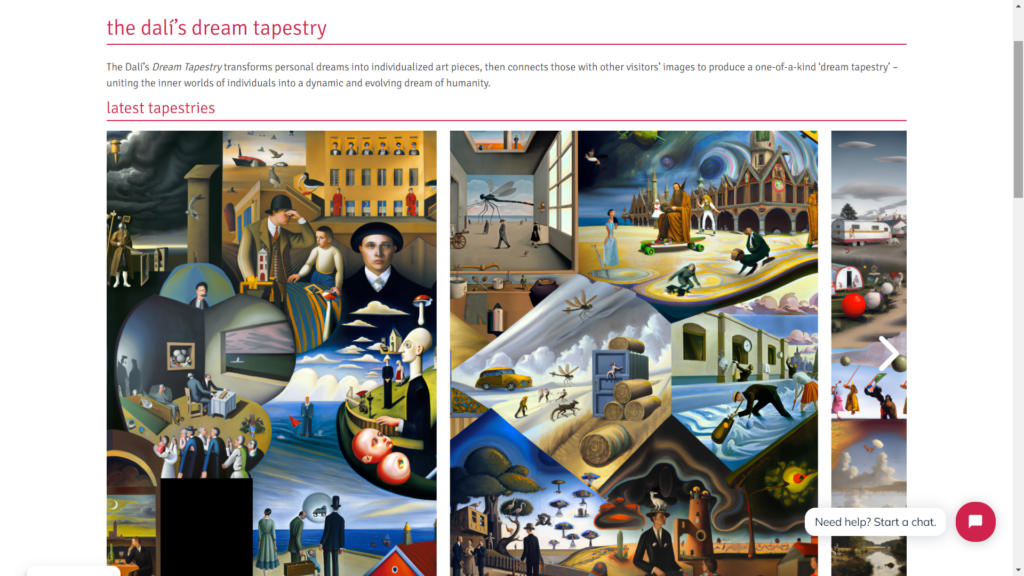Digital reviews | The Story Museum launches a new game while Dalí meets AI
Hidden Woods, The Story Museum, Oxford

It’s rare these days to find an online game that offers the equivalent experience to an exhibition or gallery, rather than being a bolt-on to the museum experience itself.
But with the help of The Space (the Arts Council’s agency that supports public engagement with digital experiences – remember them?) Oxford’s recently refurbished Story Museum has developed this standalone game to complement its new Whispering Woods gallery.
Guided by a magical hare, you must explore the world, discover three stories from different cultural traditions (including King Midas and Man-Crow), and through listening to the stories bring vibrant colour back to the monochrome landscape.
The game isn’t quick to load in its plug-in, so make sure you’re using your wifi. Similarly, it takes a little while to get the hang of the navigation, but once you’re there, the visual environment is lush and the stories are well told.
There’s not that much actual gameplay to speak of because it’s mostly about exploring and investigating a small world of storytelling. Neither is it a huge innovation in technology or interaction.
Nevertheless, it’s good to see the museum extending its experience and building its storytelling brand through a simple and elegant, playful experience.
Science in the Making, Royal Society

Traditionally, museums have presented their collections online either raw or cooked. The raw: masses of collections data in an often-inscrutable interface. The cooked: nicely presented and interpreted, but not much of it.
New data management and presentation technology is starting to blur that distinction as it becomes possible to publish collections at scale in more attractive and user-friendly ways.
Following this path, the Royal Society’s Science in the Making website is a free and open companion to the society’s Philosophical Transactions journal. It hosts more than 30,000 digitised manuscripts and records of 2,800 fellows, including the handwritten and hand-drawn correspondence and reviews that supported the public work of the society.
The user experience is all that we should expect from this new generation of collections user interfaces. No ugly hodgepodge of half-customised vendor products here, instead a clean and simple search box leads you to a results listing of thumbnail images of the things you’re looking for, with the option to filter the results if there are too many.
Open a record and you’re looking at the digitised copy in an elegant viewer, then pan zoom and flick through pages with ease.
Catalogue details of the record appear below, along with related individuals, allowing you to explore further by an item’s author or recipient.
There are quick links for stable URLs and academic references, and accessible IIIF (International Image Interoperability Framework) data for technical integration with other websites and collections.
At this scale, it’s a leap forward for professional researchers, and the kind of standard we should begin to expect. For the casually interested user? Well, it’s still impressive, but without something specific to research it can feel aimless, and handwritten letters take some effort to decode.
“In focus” articles give context to part of the collection, and frame its racism and gender prejudice. But once you get to the meat of the collections, the average reader might still find themselves in need of a helpful chef.
The Dalí ’s Dream Tapestry, The Dalí Museum, Florida

The world is currently awash with eerie dreamlike images created by Artificial Intelligence (AI) image generators. One of the most popular is Dall-E, which cheekily borrows its name from the Spanish painter Salvador Dalí.
The Dalí Museum in St Petersburg, Florida, is playing along with this collection of Dall-E generated images based on the dreams of visitors to the museum then woven into an ongoing composite tapestry.
It’s a bold move for a museum, usually invested in the authenticity of images as objects, to generate so much ephemeral imagery in the “style” of an artist, but if any artist had a mandate to wonder what machines might make of our unconscious, it would be the moustachioed surrealist Dalí.
